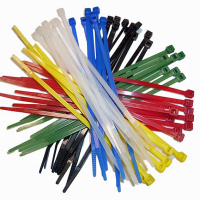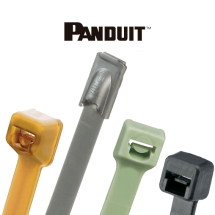Cable Ties Guide — How to Choose the Right Type & Material
When bundling cables, fastening components, or securing installations, the right cable tie is more than just a tool — it’s a critical part of system safety, durability, and neatness. This guide will help you choose cable ties suited to your application, environment, and performance needs.
Material Types
Different materials offer different resistances and lifespans. Nylon is common; UV-stabilised nylon or polypropylene is better outdoors; stainless steel or metal detectable types are needed in harsh, high-heat, or sanitary environments.
Releasable vs Single-Use
Single-use ties are simple and low-cost but not reusable. Releasable ones allow adjustment or removal, useful for maintenance or changing setups, though they may have lower strength or higher cost.
Tensile Strength
The strength of a cable tie indicates how much load it can bear. Consider how heavy the cable bundle is, whether it will be static or subject to movement, and choose a tie with an appropriate rating to avoid failure or safety risks.
Weather & Environment Resistance
Outdoor, UV, moisture, chemicals, or vibration exposure can degrade standard cable ties quickly. Use UV-resistant materials, stainless steel, or specially coated/treated ties when needed to ensure lifespan and reliability.
Size & Dimensions
The size of the tie has two key parts: bundle diameter (how many cables or how thick the bundle is) and the width/thickness of the tie. A thicker/wider tie often gives better strength. Also consider head design, mounting features like push mount or in-line heads if space or aesthetics matter.
Common Mistakes
Avoid over-tightening that damages insulation; using wrong material that cracks or degrades; reusing single-use ties; ignoring exposure to environment; and using one-size-fits-all ties instead of matching to different bundle sizes.
Installation Tips
Leave a slight gap when tightening — don’t overtighten. Trim excess tails cleanly to avoid sharp edges. Use a cable tie tensioning tool for consistent, professional installs. Store ties in dry, shaded areas before use to maintain quality.
Why Choose Cablectrix for Cable Ties?
We stock top brands like Panduit, HellermannTyton, and more; have options for indoor, outdoor, high-temperature, corrosive, and specialist environments; offer full range of materials (nylon, stainless steel, halogen-free); and provide technical support to help match the right tie to your job.



